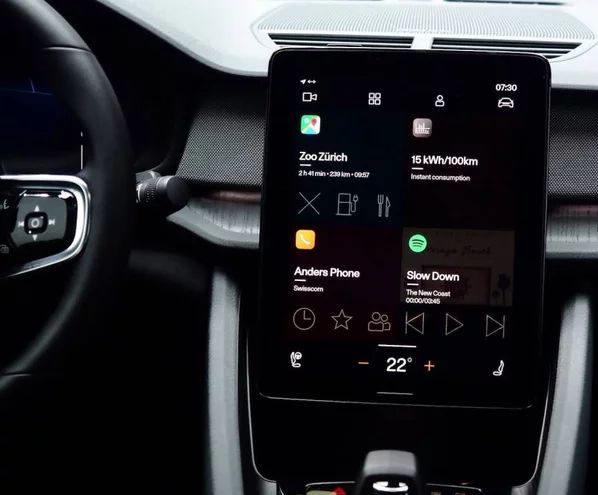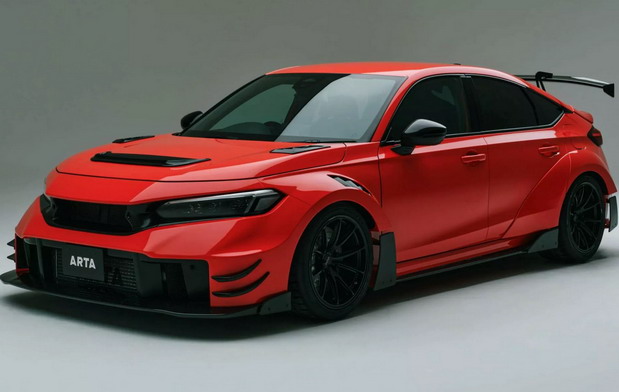AUTONEWS

Linux can be an alternative in cars
The open source system may find its footing in cars in the coming years.
According to the plans of some manufacturers, the open source Linux operating system will play a greater role in the future in so-called software-defined vehicles. The high-performance computer in the Volkswagen ID models, for example, was developed by Elektrobit, a subsidiary of Continental, and runs on the Ubuntu system.
Linux is now established as an operating system in many areas: data centers, telecommunications infrastructures, smartphones, televisions and medical technology. The next area can be cars, or more precisely, certain parts of them. “This is favored by the consolidation of control units, which are replaced by a few computers in new cars” – he stated Christian Reinhard, CTO of Elektrobit. An on-board application server from Continental is used in the Volkswagen ID.3 electric model. The Desse operating system comes from Elektrobit.
“Linux is a modern operating system with countless interfaces, many tools, and many users who develop with it. The automotive industry also handles the operating system differently than it did ten years ago. Back then, OEMs and large suppliers hand-built Linux- software for the given application area based on the kernel. Today, maintenance must be guaranteed for 15 years – including security, troubleshooting and updates,” the manager listed the advantages. Elektrobit relies on Ubuntu Linux and has partnered with Canonical. The latter is responsible for the long-term maintainability of the kernel and related modules, while Elektrobit is responsible for the maintainability of automotive safety functions and components.
According to Pedro Pacheco, research vice president for the mobility industry at Gartner, Linux has long been considered a piece of cake in the industry. Mercedes-Benz’s own MBUX development, for example, is based on embedded Linux from the Yocto project. Toyota, Mazda and Mitsubishi also used Linux in their cars. “Initiatives like Automotive Grade Linux, with their open frameworks, have been spreading the message for years that there’s more to it,” Pacheco pointed out. Automotive Grade Linux operates under the umbrella of the Linux Foundation. There are other consortia that aim to bring Linux to vehicles, such as the Eclipse Software Defined Vehicle Initiative, the Scalable Open Architecture for Embedded Edge (SOAFEE), and the ELISA project, which aims to develop Linux for safety-critical systems. “What’s interesting is that the Linux theme can be found both among OEMs with a high level of software expertise and among OEMs who are not at the forefront in this regard. The strengths of an open source operating system could best be exploited by OEMs who are very proficient in software or new market entrants,” added the manager.
As you know, Google Android Automotive OS is an operating system based on Linux kernel. The operating system is used by BMW, Mercedes-Benz, Polestar and Volvo. Reinhard, whose company uses not only its own Linux but also Android Automotive in software development, did not expect the two operating systems to conflict. “Android offers many functions and a large ecosystem for on-board IT and entertainment, while we do not see the application area of our Linux here. Its target markets are the body industry and in the future also driver assistance. To this end, Elektrobit intends to launch this year’s ASIL- B (Automotive Safety Integrity Level) certified Linux,” the expert emphasized.

Today’s Linux distributions are not designed for the special requirements of cars. Booting takes too long and real-time capabilities are not enough. The way Linux handles failed updates is also not appropriate. The ISO 26262 standard regulates how safety-important systems of cars must be developed in order to achieve functional safety. ASIL-A level is the base, so to speak, while ASIL-D represents the peak of functional safety. “For which driving support functions an ASIL-B Linux is sufficient, a general statement cannot be made at all. Level 2 is definitely possible, level 2+ is probably also. In the case of level 3, it depends on the specific requirements. For ASIL-D applications, Elektrobit continues to use its own developed operating system,” explained Reinhard.
Many experts currently do not consider it important to go higher than ASIL-B for Linux. The kernel is too extensive and even a higher level of certification would be extremely expensive – if the technical requirements can be met at all – which is far from certain. Especially because there are already certified solutions for ASIL-D requirements. Harald Ruckriegel also sees the future of Linux in the ASIL-B environment. As the global automotive industry leader at Red Hat, the specialist is responsible for the topic of software-defined vehicles and sees Google not as a competitor, but as an “exciting ecosystem partner”. “We also see ourselves as an enabler of the basic infrastructure of the car, we do not operate at the level of vehicle brokerage software or services,” he clarified.
Red Hat wants to make its enterprise Linux ASIL-B-capable, and for this purpose it entered into a partnership with the accredited certifier Exida. “The idea is to certify our operating system once, in a complicated way, while re-certifications after updates would then be quite simple,” explained Ruckriegel. It is not yet public when this ASIL-B certified Linux will be available. However, last year Red Hat and General Motors already announced that the OEM is looking at ASIL-B Linux as part of its future Ultifi vehicle onboard software platform. GM announced that it plans to introduce Ultifi in “select next-generation vehicles” starting this year.
“Linux provides the possibility to run software containers. The software in the container brings with it its own configuration and environment – this approach is already proven in the corporate environment. The idea now would be to develop such containers and then deploy them in the market in an automated and rule-based way to the countless cars in the world – or to the intelligent road and telecommunications infrastructure,” commented Hans Windpassinger, who is responsible for software-defined vehicles in the IBM Global Manufacturing Industries team.
Autonews

Nenhum comentário:
Postar um comentário